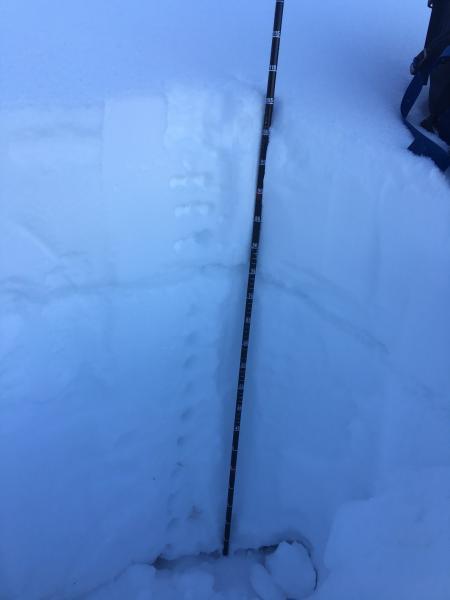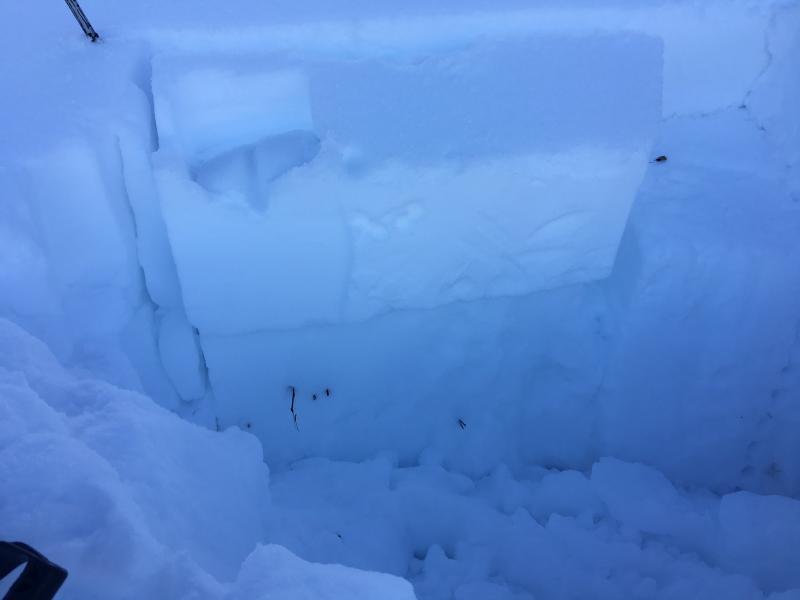Under the surface, we found even more of interest. A North facing pit at 8200’ had ECTP 21,25 Q2 down 30cm in a 105 cm snowpack. I haven’t seen propagation in weeks! What’s more, the fracture occurred in 2mm of mixed forms between two crusts; did the January 30 storm crust set-up or develop in some unusual way here to produce the narrow crust sandwich? Not sure. I don’t imagine this isolated result suggests pending slab avalanches in the central Wasatch, but it’s a reminder that the advisory “describes general avalanche conditions and local variations always exist.” A North facing pit at 7200’ provided the more common result, with ECTN fracturing below rather than within the crust.


Our pit from a SW slope at 8200 feet reflects more wide-spread solar aspect concerns. The entire 90cm of snow was isothermal, measured in 10cm increments. Wet layers at the top above a 3 cm curst, at the bottom, and surrounding a 0.5cm crust down 40cm could all be squeezed to produce dripping water. The slab between these layers was perhaps moist but not wet, 4F to 1F in hardness.
Blase Reardon forecasted wet avalanches for the “Going to the Sun Road” in MT and provided a conceptual model for wet slabs. http://www.avalanche.org/moonstone/SnowMechanics/Wet%20Snow/WetSnowArticles.TAR26.4.pdf
The ingredients, he posits, are:
1) a water factory (in our case melt from sensible heat and solar radiation)
2) a dry slab (through which water passes without wetting the layer) and
3) “funny business” underneath (an existing weakness, let’s say, or stratigraphy that concentrates water accumulation).
Are we producing enough H2O? How funny is our business?
According to a wet slab forecasting flowachart provided by Eric Peitzch in the same issue our pit makes the snowpack look ripe for WS activity: water volume exceeded a critical value, formed flow fingers, and is pooling below a slab at capillary boundaries. But 10 feet away from my pit, boot penetration went from 10cm to crotch-high (a good wet loose indicator): the dry slab appears not to form a continuous layer in our location. Moreover, we’ve had wetting of distinct layers for a week without real wet slab activity; what would it take to change the balance? I'm excited to keep watching!








